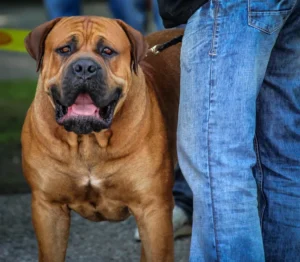
There’s no such thing as an evil bird; however, some birds may be fearful or have emotional problems that lead them to want to avoid being handled. When one of these fearful or emotionally damaged birds becomes part of your pet population, this could create problems for both owner and bird; potentially leading to aggression on both sides. But with proper training your bird could enjoy its time with you instead!
Why Are Pet Birds Aggressive? Fear and prior traumatic experiences are frequently the sources of aggression in pet birds, leading to handling issues, bites, or attacks when interacting with their owner and others1. But birds are complex animals; any number of things could contribute to aggressive behavior:
Fear may develop in pet birds that were not given proper socialization when young. Without sufficient introduction, their fear can grow to include humans, other birds and new experiences.
Some birds become jealous when their owner interacts with other people, as this triggers the natural pair bonding instinct many bird species have, making you their partner in captivity.
If you adopt an older bird, it could have been mistreated or neglected by its previous owner. Certain types of birds become aggressive during adolescence due to hormonal fluctuations; this phase should pass soon enough.
Protecting their claimed territory – such as their cage or feeder – may lead to aggression in birds. Furthermore, those suffering from stress or lacking mental stimulation could act out.
How to Stop Aggressive Behavior If your pet bird bites when being handled, make sure that you dedicate some time each day towards handling its feathered friend. Your efforts don’t need to be formalised; simply incorporate any attempts you have towards decreasing its aggression into normal handling routine. Bond with it or teach it petting tricks – anything will help the two of you enjoy each other more; ultimately the more time spent together the less aggressive your bird will become! The more work is put in with them the greater their enjoyment will be and less aggressive behavior they will display when handled by an owner!
When training your pet, following some basic tips and techniques will ensure they learn that handling is both safe and enjoyable.
Move Your Bird Cage To A Neutral Location
For optimal training results, move your bird’s cage to an independent environment during training sessions. Doing this may make them more cooperative with their owner and prevent territorial aggression from developing.
Do Not Force Contact
If a bird lunges at you when you place your hand near, resist the urge to withdraw quickly in fear. Doing so is likely to make them even more fearful and nervous than before.
Slow and gradual is usually best; don’t force contact; allow the bird to decide when they feel ready to step up or accept treats.
Stick Training
Training birds to step onto sticks or perches without force is known as “stick training.” It is often recommended as an alternative approach when training fearful or traumatized birds that need more time for rehabilitation to accept this way of moving without force from humans.
Avoid Yelling
Raising your voice in anger (or pain) won’t make your bird understand that what they have done wrong, it will instead likely only reinforce its bad behavior as your bird will thrive off seeing such a strong reaction from you. So try your best not to use vocalizations like raising your voice as punishment against your bird!
Bear Gifts Offer your bird treats and speak in a soothing tone when handling it, using treats and praise instead of discipline to encourage it to interact with you more readily. Every positive interaction will likely result in closer relationship between yourself and the bird.
Many people try to force interaction in hopes that this will encourage the bird to stop resisting and accept being handled more easily – this technique is known as flooding, although it should never be used as part of training methods.
Build Trust Through Repetition
With birds, repetition and consistency are keys to training success. Set aside at least an hour every day for training with your bird; don’t give up; remember it may take a little while for trust to develop between you both!
Do Not Overwork Your Bird
For best results, initially keep training sessions to 15-minutes maximum in the beginning. Birds are intelligent creatures that require interaction and stimulation in order to maintain good mental health and avoid becoming stressed out.
Break the Pair Bond
If your bird becomes jealous of how well-received other people are by you and him/her, family members or visitors can help show it that these new acquaintances don’t threaten its relationship with you. Their goal should be to better socialize him/her and show them they won’t threaten it in any way.
Try various confidence-building exercises with other people and stay nearby as an example of approval. For instance, have visitors offer your bird treats whenever they enter the house to reinforce good behavior; additionally they should praise him/her in an upbeat voice while making eye contact.
One other activity to try with your bird is having your family take turns picking at its food with their fingers like birds would use their beaks. When doing this regularly, your bird may even want to join in the fun! They could even help clean its cage or provide food or water so it feels comfortable around everyone in its presence.
Maintain a Flexible Routine
Birds require mental stimulation and many enjoy routines, so setting aside regular time each day for food, play, and other interactions can be beneficial. However, some birds may react negatively if their routine becomes too strict and disrupted.
Example: If you come home from work at a specific time and immediately release your bird for playtime, being late one day could prompt it to act out in response. Try incorporating some flexibility into your daily routines when dealing with birds – this will allow them to better accept change and understand that things don’t always occur in a specific order or timeline, but will always happen eventually.
Get Professional Help
Given sufficient effort, most pet owners can train their birds themselves. If your bird becomes aggressive enough that training exercises cannot help him/her, visit an avian veterinarian first to rule out any health concerns; once this has been addressed and no other physical causes for its undesirable behavior can be ruled out, consult a certified parrot behavior consultant for professional assistance in dealing with his or her case.





